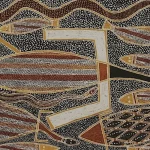
The Language of Identity: Symbolism and Significance in Kim Scott’s Writing
Kim Scott is an esteemed Indigenous Australian writer of Noongar heritage and is known for his powerful storytelling that describes the complexities of Indigenous identity and the significance of cultural connections. Through his indigenous stories in Australia, Scott uses symbolism to explore the depths of Australian Indigenous culture and its significance. This essay examines how Kim Scott employs symbolism in his writing to articulate the language of identity, cultural heritage, and the ongoing legacy of Australia's First Nations people.
Reclaiming Language and Culture
When you go through Kim Scott's writing, you will see that it is deeply rooted in Indigenous language and cultural heritage. Scott uses symbols and motifs that act as a form of cultural retrieval, challenging the historical suppression of Indigenous languages during colonisation. The act of reviving and incorporating Noongar language within his writing is an act of empowerment, reclaiming the Indigenous voice in the Australian literary landscape.
Symbols such as ancestral names, place names, and linguistic elements showcase the inherent value and resilience of Indigenous culture for the upcoming generations. By weaving these symbols throughout his narratives, Scott reaffirms the significance of Indigenous languages and their role in shaping the identity of Australia's First Nations people.
The River As A Symbol Of Connection
In his writing, the river emerges as a prominent symbol representing a connection and harmony between cultures. The river is a central point where Indigenous Noongar people and European settlers come together, and its flow is a metaphor for the blending of various cultures. Through this symbolism, Scott explores cross-cultural interactions, highlighting the challenges and opportunities for understanding and reconciliation.
The river also displays a sense of cultural continuity, as it has been a crucial source of sustenance, ceremony, and storytelling for Indigenous communities for generations. By using the river as a powerful symbol, Scott reinforces the enduring nature of Indigenous culture and its capacity to adapt and survive amidst significant historical shifts.
Birds As Symbols Of Spirituality
Throughout Scott's writing, birds frequently appear as symbols of spirituality and cultural significance. Birds hold deep meaning in Indigenous cultures, and are often considered messengers between the spiritual and earthly realms. They are seen as a guiding force in the lives of Indigenous people and reflect the spiritual interconnectedness Indigenous communities have with the land and the natural world. These symbols will help teach your kids about continuity and sacredness, reinforcing the nature of Indigenous spirituality and its role in shaping cultural identity.
Tip
This article Why You Need to Share Indigenous Australian Stories with Your Kids will tell you the importance of sharing Kim Scott and other writers’ stories with your kids.
Dance And Ritual As Expressions Of Identity
You will also see a lot of dance expressions and forms in Scott’s works to display a powerful symbol of Indigenous identity and cultural expression. By highlighting the significance of dance and ritual, Scott shows the role of cultural practices in shaping identity and preserving Indigenous heritage for future generations. These expressions of cultural identity serve as a powerful reminder of the resilience and strength of Indigenous communities in the face of adversity.
Dual Narratives and Multiple Perspectives
Scott uses dual narratives, presenting the story from both Indigenous and non-Indigenous perspectives. This technique allows Scott to understand the complexities of identity and the impact of historical trauma from multiple angles. The dual narratives symbolise the intertwining histories and shared experiences of both cultures, highlighting the need for mutual understanding and reconciliation.
By combining these narratives, Scott reinforces the idea that cultural identity is not fixed but constantly evolving, shaped by historical contexts and contemporary interactions. This approach challenges readers to confront their preconceptions and embrace a more nuanced understanding of Australian Indigenous identity.
Tip
Read this article, The Continuity of Indigenous Narratives, to know more about how indigenous narratives are continuing in contemporary writing.
Conclusion
When you look at Kim Scott's writing, you will see a profound exploration of the language of identity, employing symbolism to convey the enduring significance of Indigenous culture and heritage. Through his use of symbols such as language, the river, birds, dance, and dual narratives, Scott writes a powerful narrative that speaks to the heart of Australian Indigenous identity.
His works serve as a celebration of Indigenous resilience, cultural reclamation, and a call for understanding between Indigenous and non-Indigenous Australians. Scott's use of symbolism becomes a bridge between past and present, connecting you with the profound cultural heritage of Australia's First Nations people and fostering empathy, appreciation, and recognition of Indigenous voices in the literary landscape.





